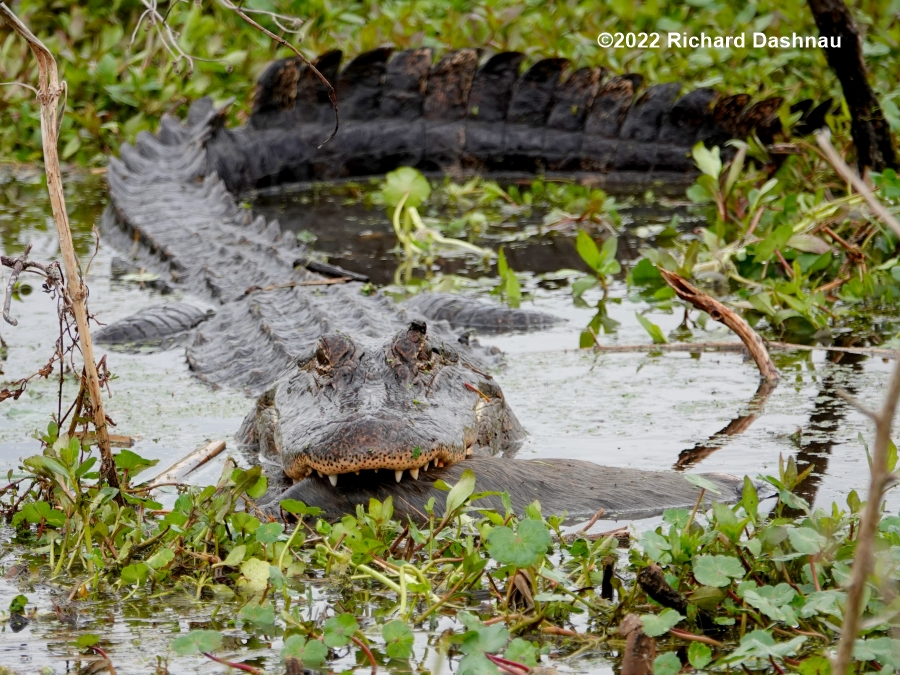
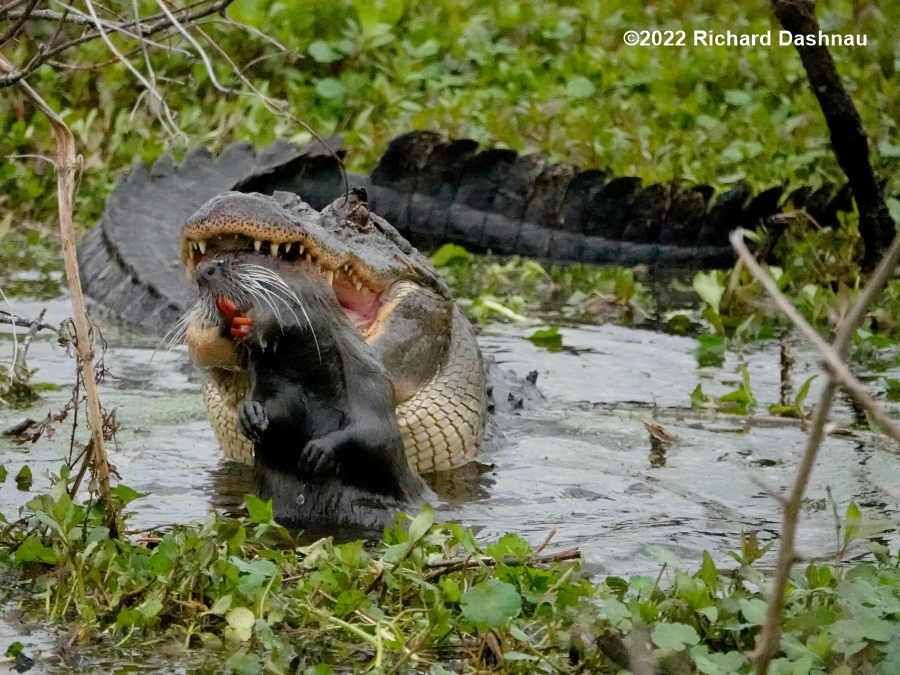
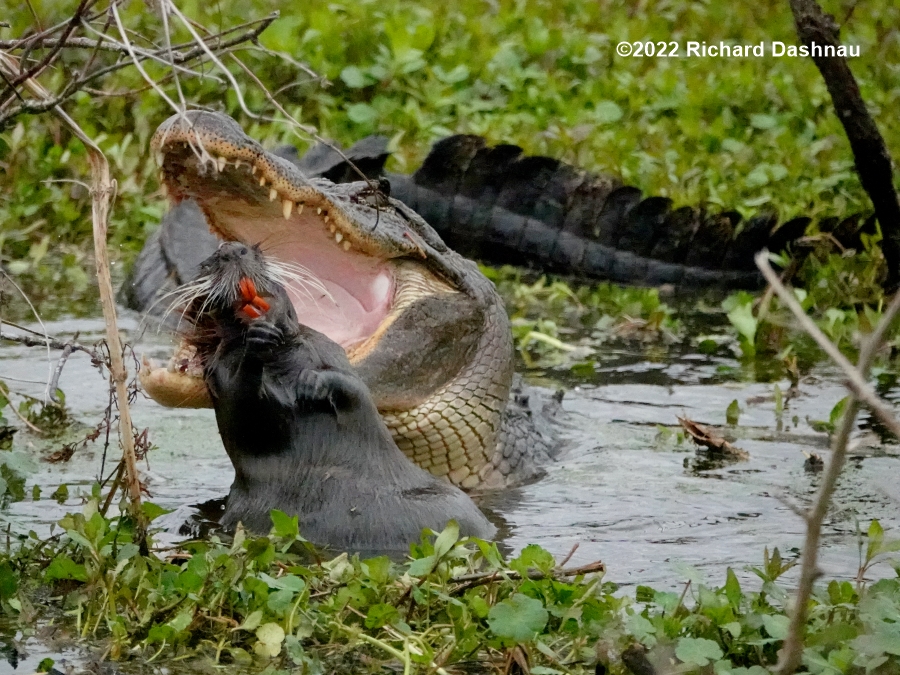
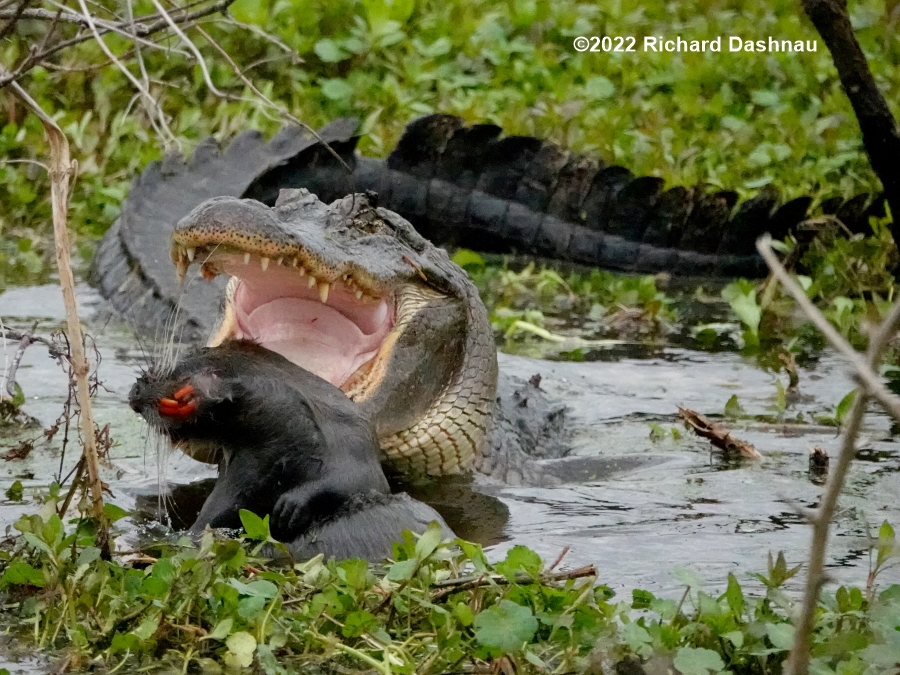
Many
people have seen programs on television showing crocodiles
attacking
large
animals like deer and cattle. While this is amazing, and
sometimes
horrifying,
those
creatures are not alligators. Crocodiles' jaws are
a bit different than alligators' jaws, and are used differently.
Alligators favor prey
items that will fit inside their head.
That
is, if they can swallow it
whole, then they will normally attack it. Alligators sometimes
eat deer
in the park, but the larger ones were probably found
carcasses,
but small fawns might have been live captures. Alligators
have eaten large nutria (as I've shown on this website). But,
most of
the time, they will
eat things like small fish,
frogs, and crayfish. Snakes and turtles are
also pursued, with alligators seeming to be especially
well-adapted for
eating turtles. A study done in Texas examined
the stomach contents
of about 50 alligators (which were unharmed). Research
showed
that only
one of these alligators had eaten a bird (which couldn't be
identified,
it might have already been carrion when taken), and the rest had
stomach
full of small fish and shellfish. I've seen 11-foot
alligators going
after prey that was no larger
than their largest teeth (very small frogs
and fish).
03/13/2022 I
found this Alligator with a Nutria in Pilant Lake. I'd heard about it
from visitors that I'd encountered while walking the trails. So, it had
been working on the carcass for a few
at least a few hours.
By this time, I've seen quite a few examples of alligators
consuming prey, but I am always open to capturing it again.
So, I
did.
I captured a series of photos as it handled the carcass.
(warning: The pictures may be a bit graphic for some
visitors.)
I repeat, the alligator had been at this for at
least
a few hours, so the Nutria was long-past feeling anything. This first
series of 8 shots show the "inertial handling" of the Nutria;
involving
the alligator tossing the carcass and
shifting the position of its
jaws while the carcass is in the air. All of the activity described
below also has video clips, it's uploaded and visible here (mp4) (7/8/2022)
Showing
slowed
video,or a series of images can be misleading. This happens very
quickly, and the alligator may drop the carcass often. As the process
continues, the carcass getssofter
as the connective tissues and bones are crushed, so it "flops" around
a
lot.
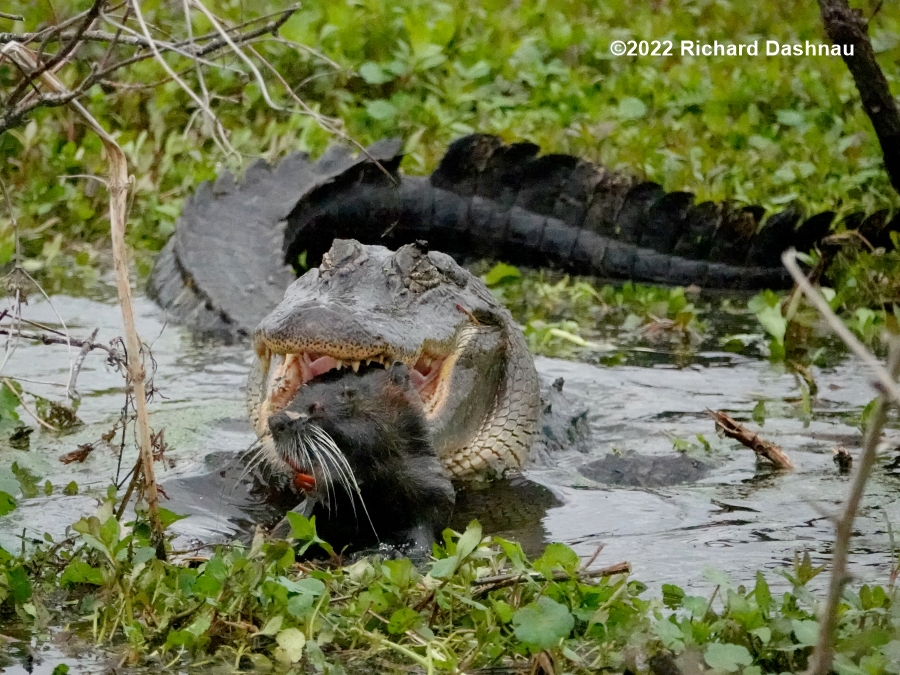
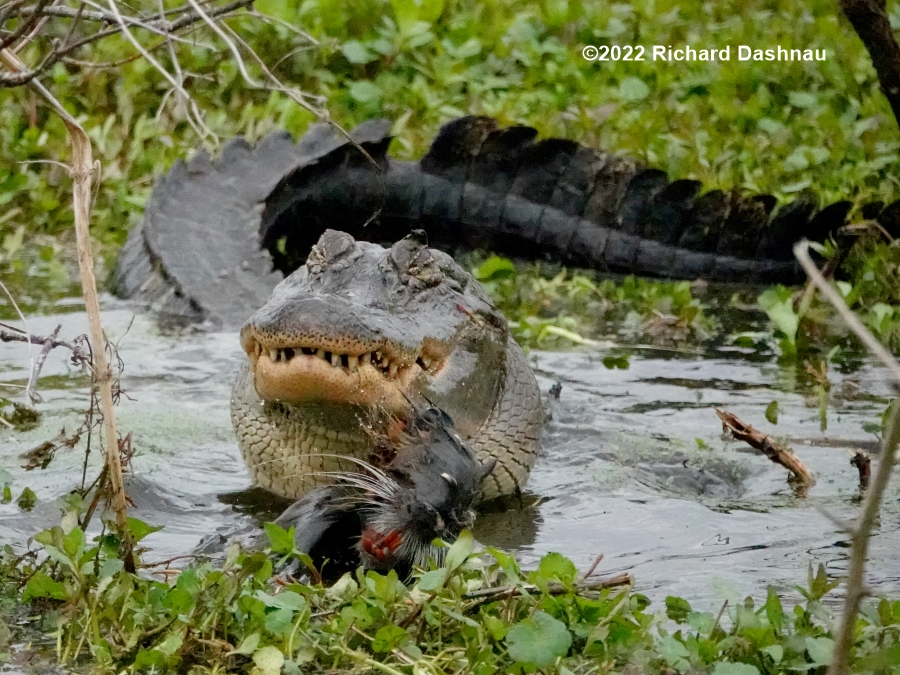
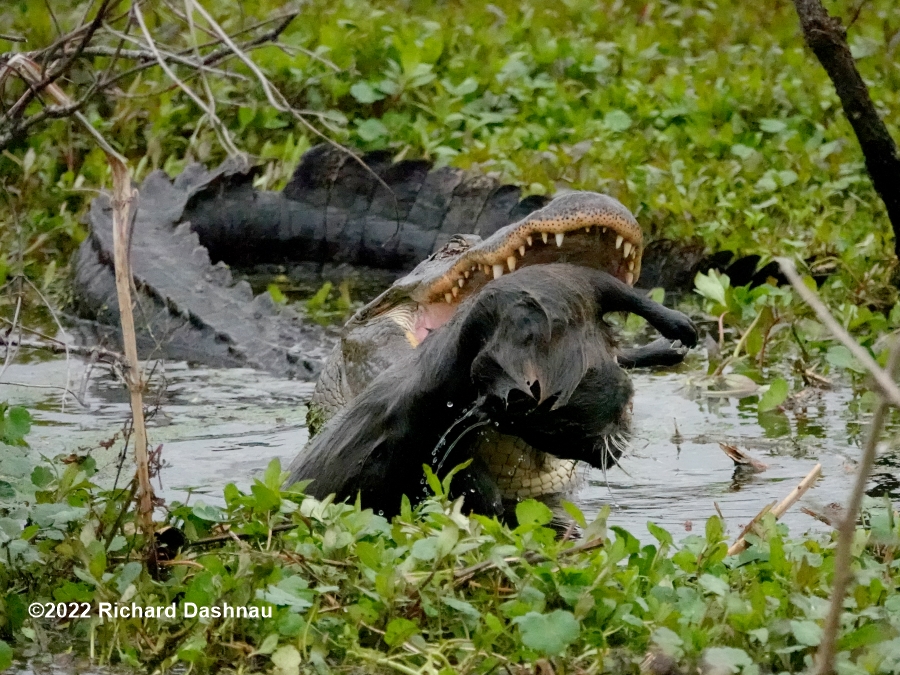
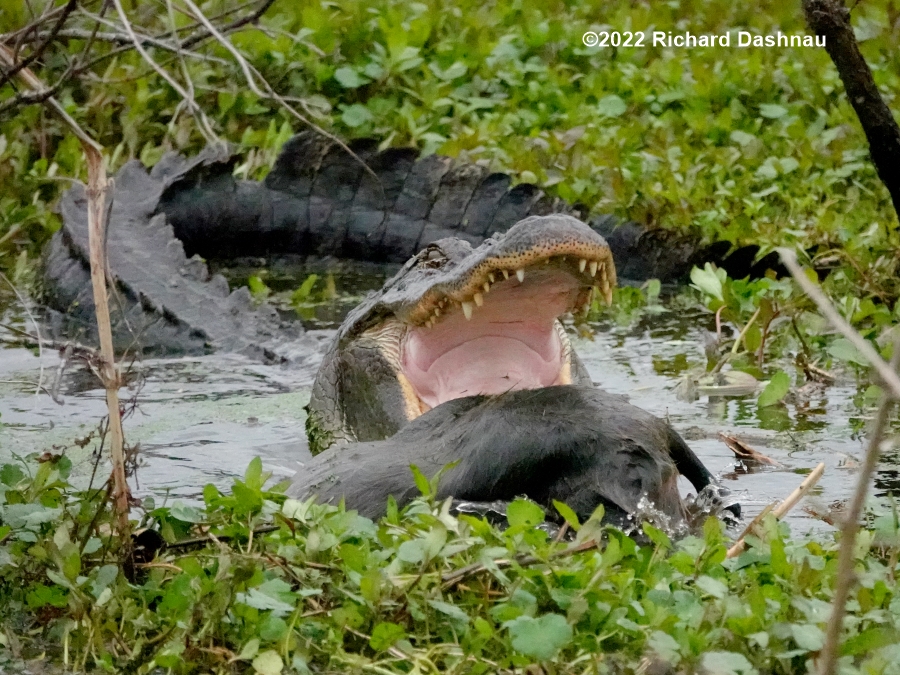
For
this experience, I happened along at the right time to capture the
first major breach of the carcass. The 1st image below shows how the
alligator tries to lift the entire carcass free of the
substrate
(water, plants, land, mud). Then it usually swings the prey to the
side
and back; then falls forward while swinging its snout (and the prey)
forward. The 2nd image captured the
carcass as it swung
forward--horizontal; fully extended by the forces acting upon it.
Images 3 and 4 show the end of the prey snap; as the alligator pulled
back on the carcass that was still
moving
forward. At this moment, the carcass tore. The
mighty
jaw-muscles are visible as they worked to hold the moving dead weight.
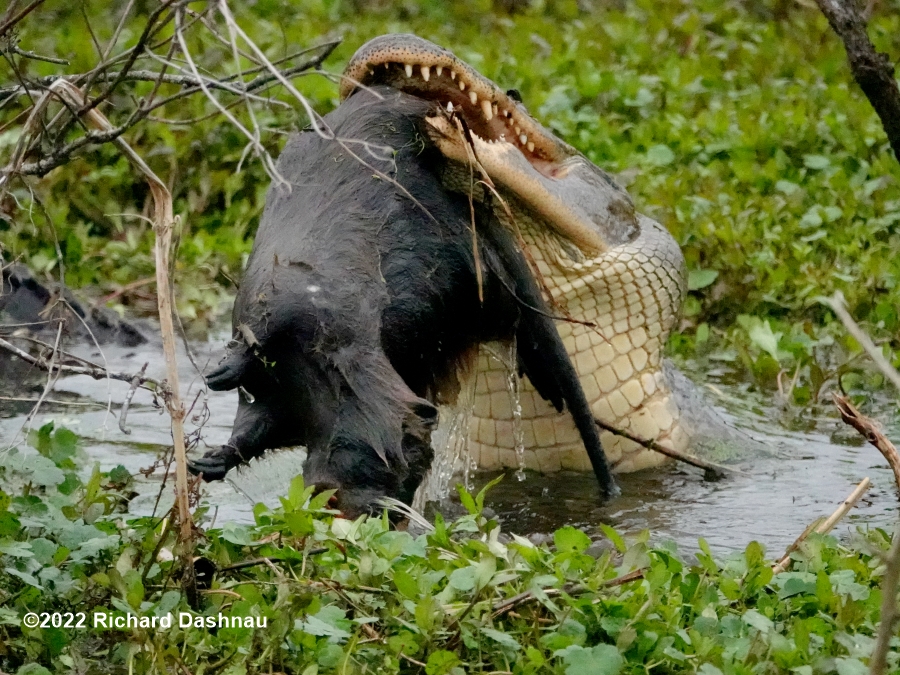
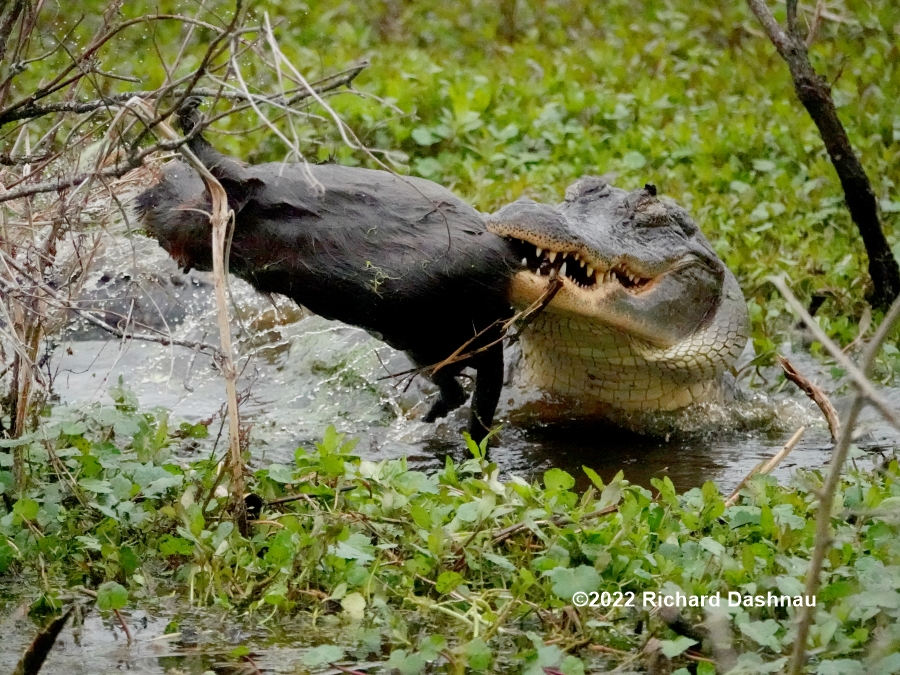
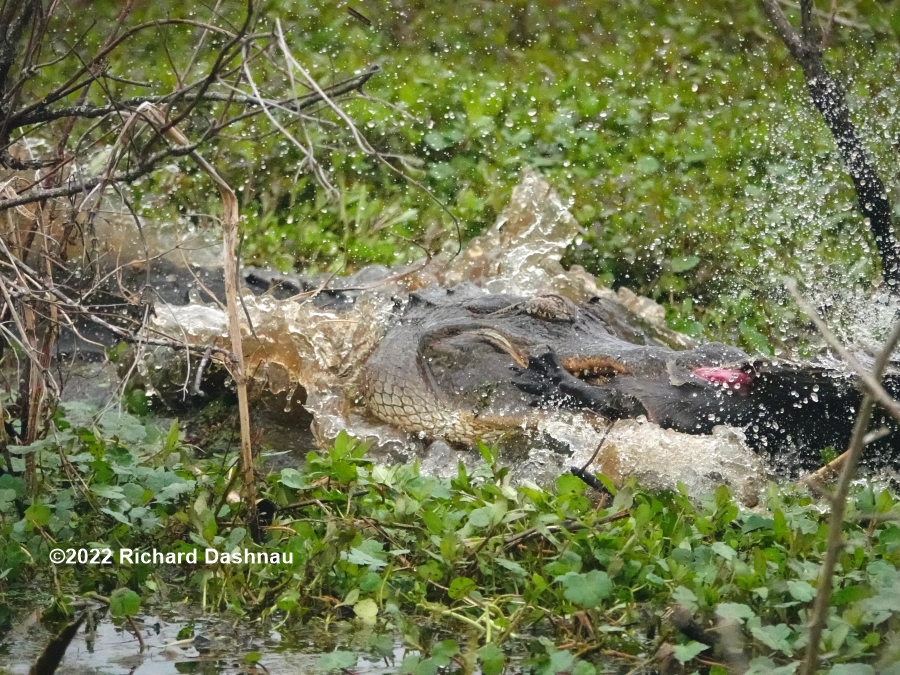
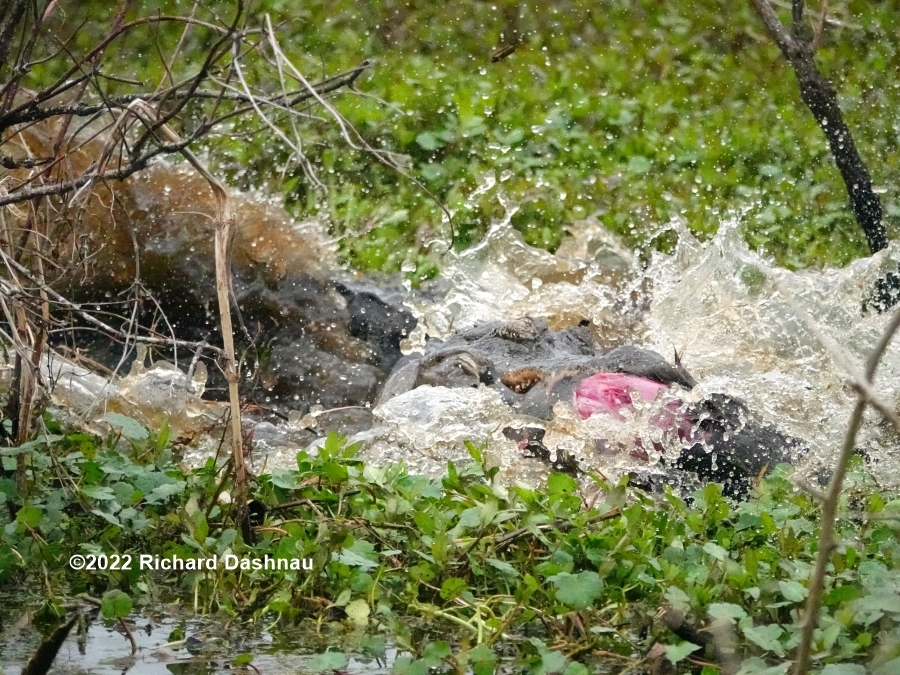
A
few minutes later, the situation became complicated. While the gator
with the Nutria rested, another alligator appeared out of the snag of
small trees a bit West (Off to the left in the
pictures
below). Something like this often happens. Whenever something
is
thrashing around in the water enough to make a sound and/or splash--it
will often get the attention of alligators
in the vicinity.
So, not only was there commotion in the water--but there was
also
a Nutria carcass. BUT THEN...another alligator appeared
behind
the first newcomer!! The second gator
was smaller than the first
newcomer. They moved through the plants in single file, deliberately
pushing towards the alligator that had food, with the large one
leading. The nutria-gator moved
off,
going West.; and the two newcomers followed. All 3 gators
moved
slowly--but they were dealing with each other. The "widescreen" images
below are frames from the video.
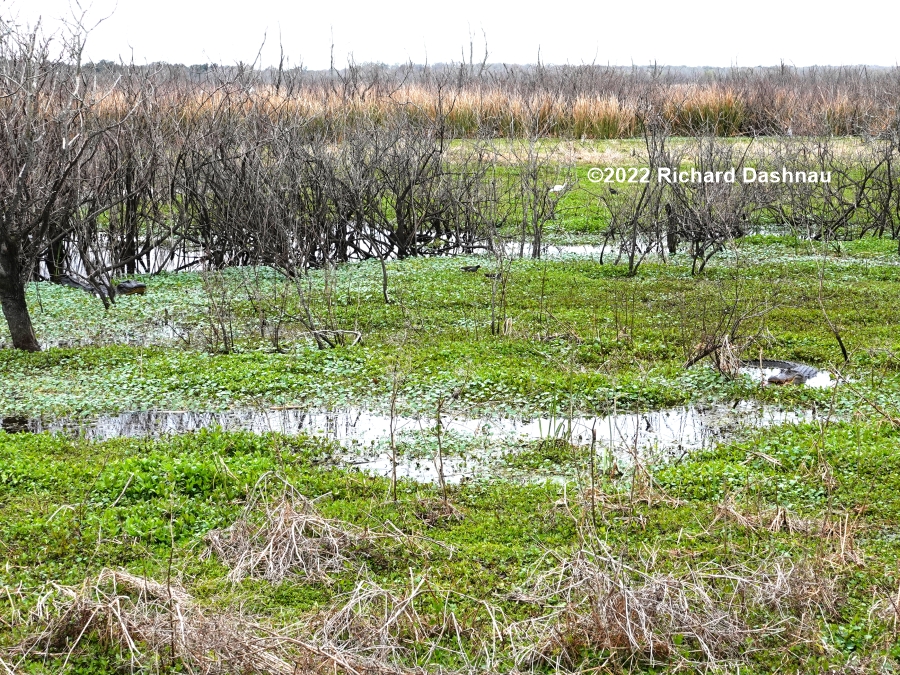
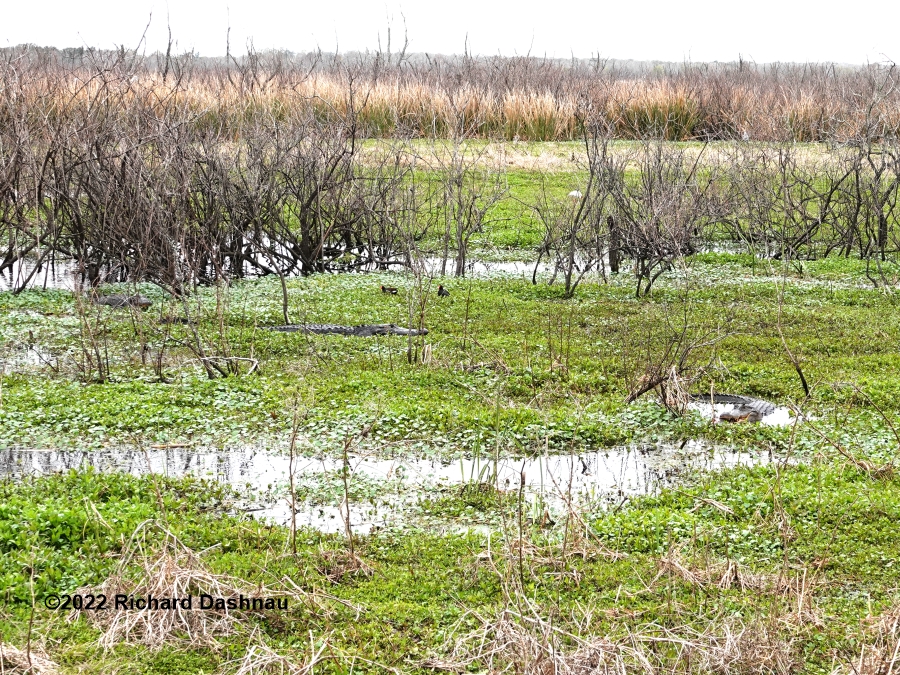
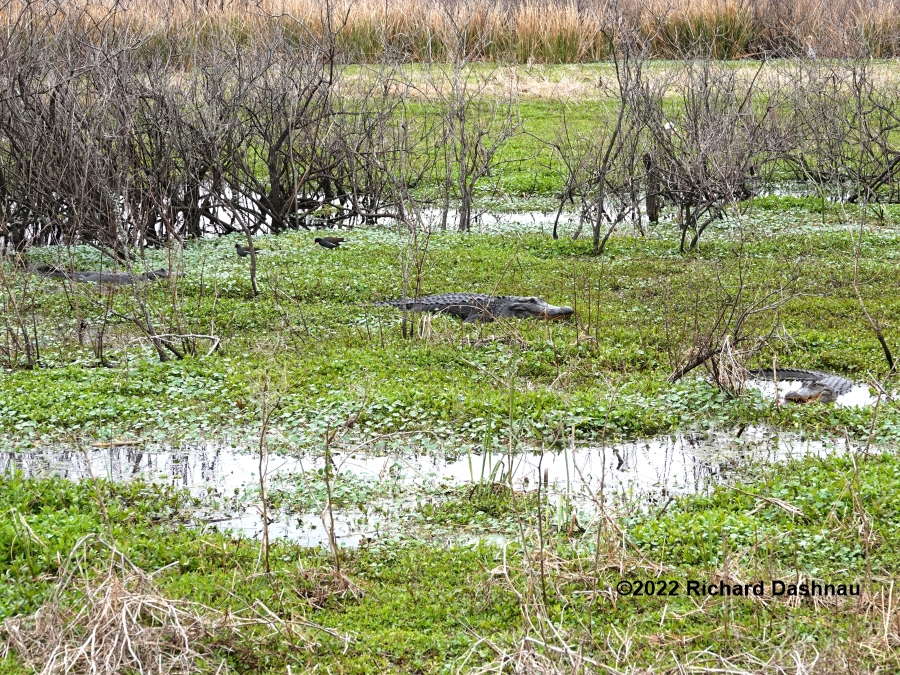
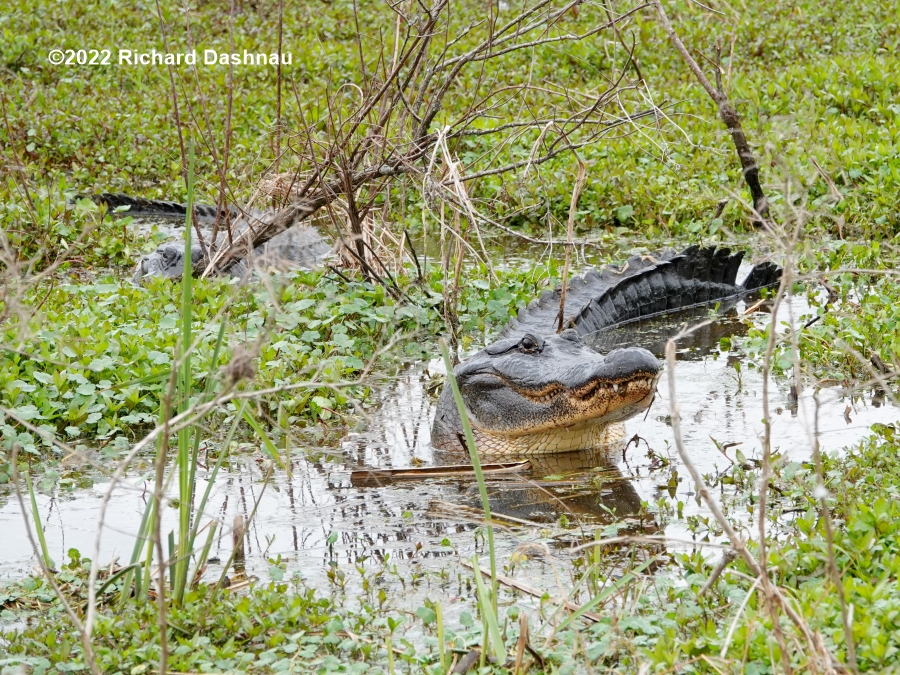
The
gator with nutria quietly moved west, and into the trees, while the
two
newcomers moved to where that gator had been eating, and they searched
there-maybe there was residual rodent
odor there. Not pictured here
(but in the video which I will get to) was the interesting
relationship
of the two new gators. The smaller one moved into the lead for a while
as they slowly
pursued the other alligator. An
association between them seemed to be in place (they
were..."together"?), or maybe it was just both of them seeking the
same
prize.
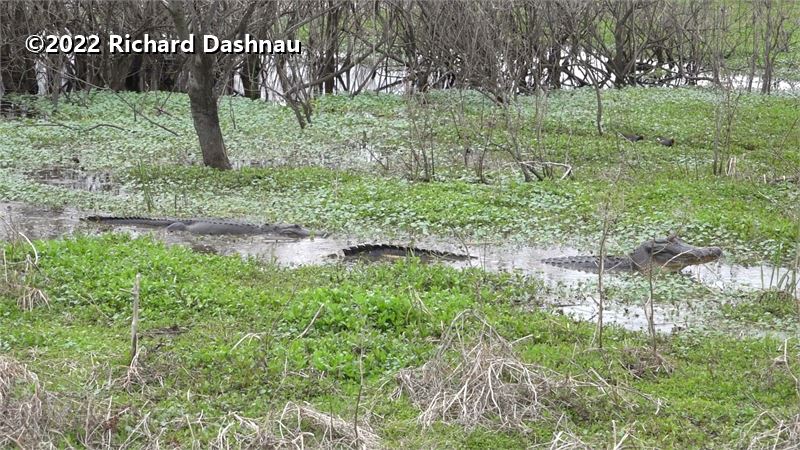
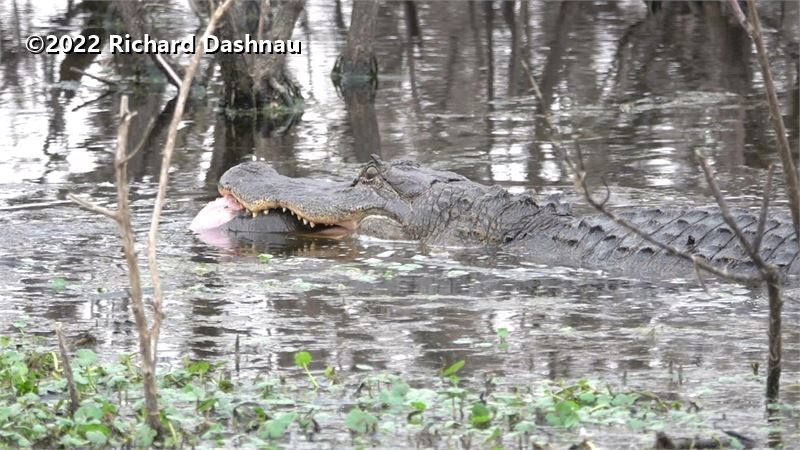
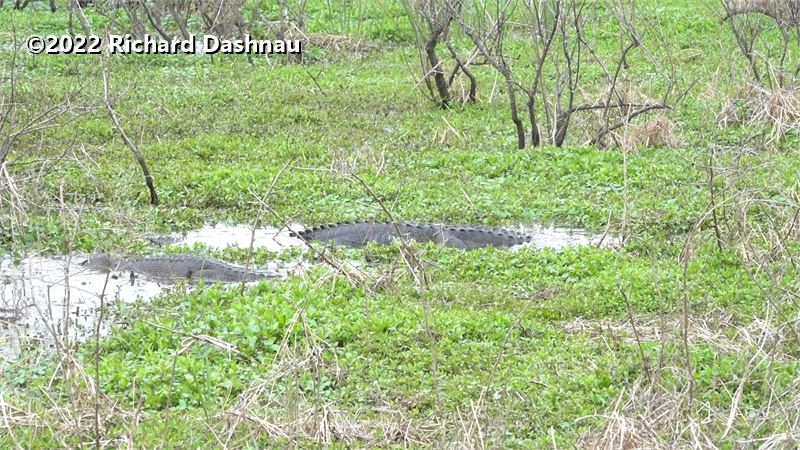
The last
image below shows the alligator and parts of the Nutria after it had
come back next to the trail. As I
mentioned above, all of the activity described here also has
video clips, it's
uploaded and visible here (mp4) (7/8/2022)
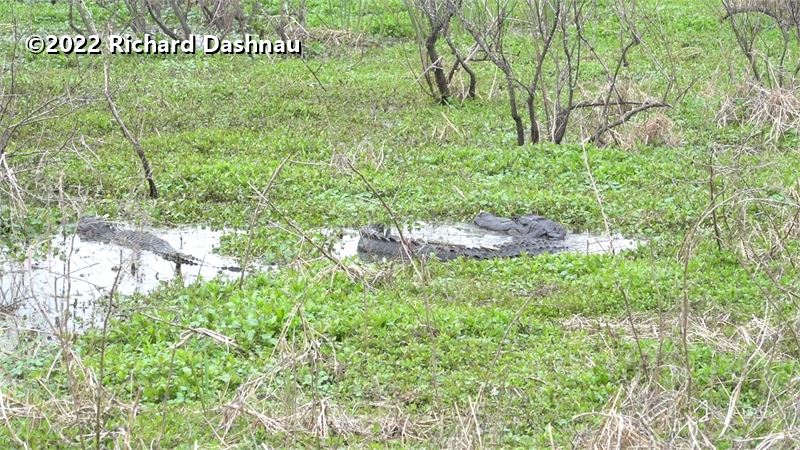
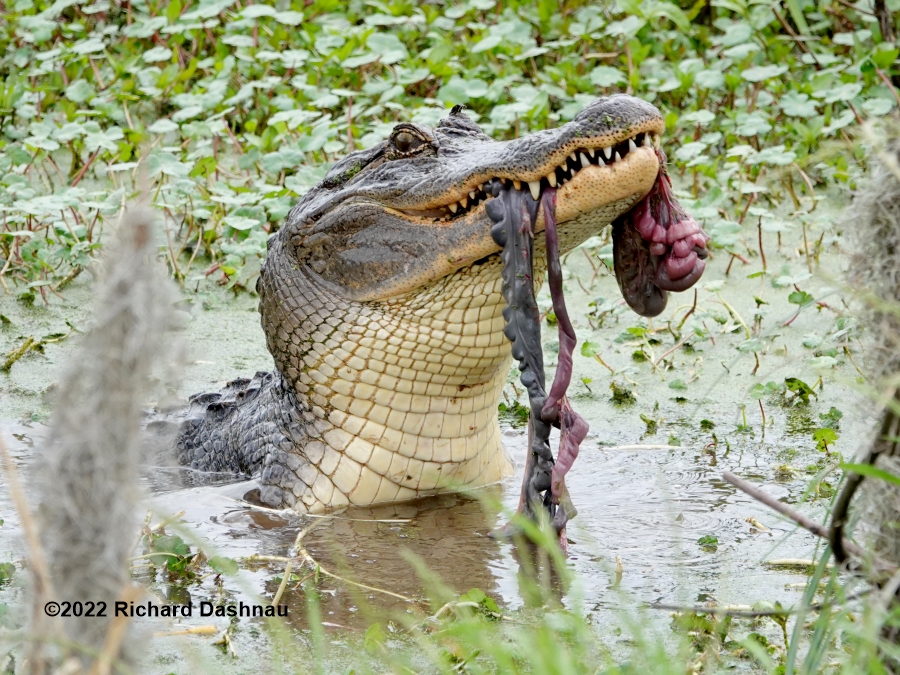
04/22/2021 I've
finally
gotten a closer look at an alligator at Fiorenza Park North!
I've seen an alligator there before, but far away, on one of
the
islands. This time it
moved away from the closer bank. I
watched it swim across to the West edge. I know that
alligators
often forage along the boundary between different conditions-for example
at the edge of a floating mass of plants, or the shallow edge of a pond
or a lake or sharp edge; as shown here.
I shot video (and
a few stills) while watching the alligator through
the
camera. The alligator did not catch anything, and eventually
moved out towards its usual island spot. But I did capture
some
short meetings between the alligator and two
other animals. They
are shown in the images below. I'd seen the Nutria swim past going in
the other direction. I happened to be filming when it swam back. I
caught that on video,
and that's been edited into a clip
that you can see here.
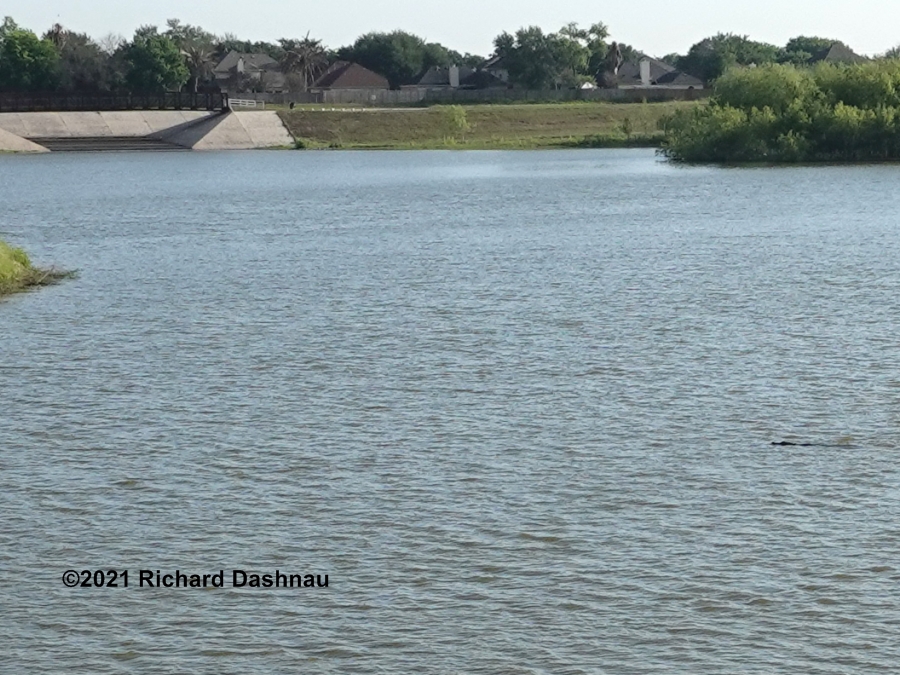
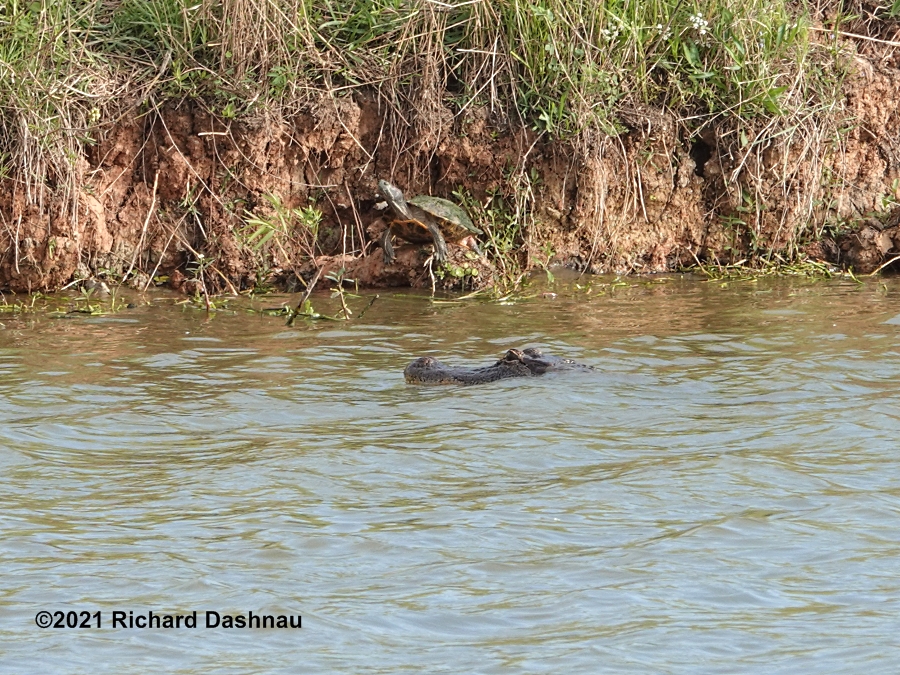
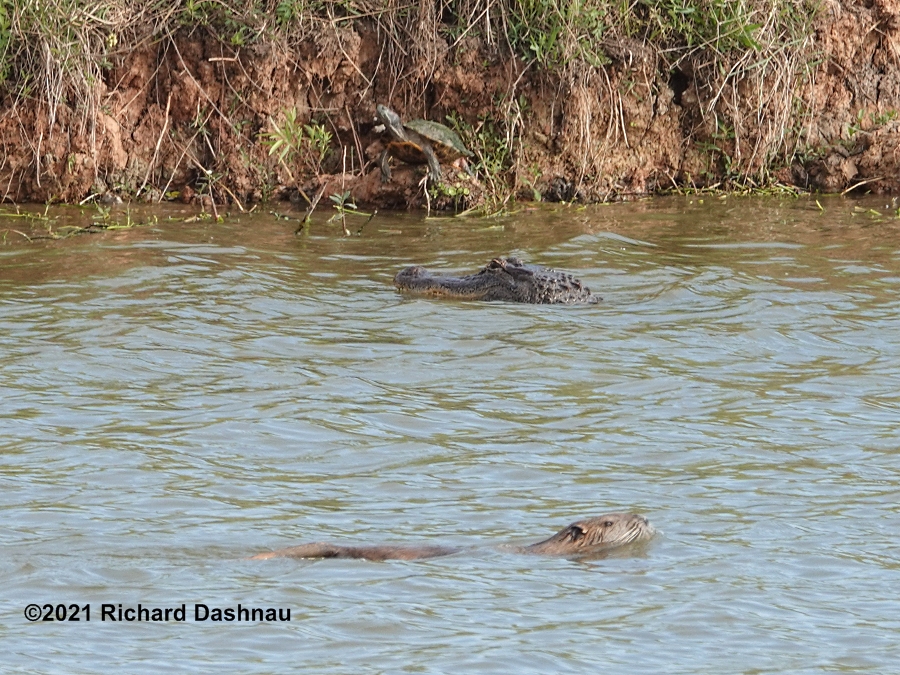
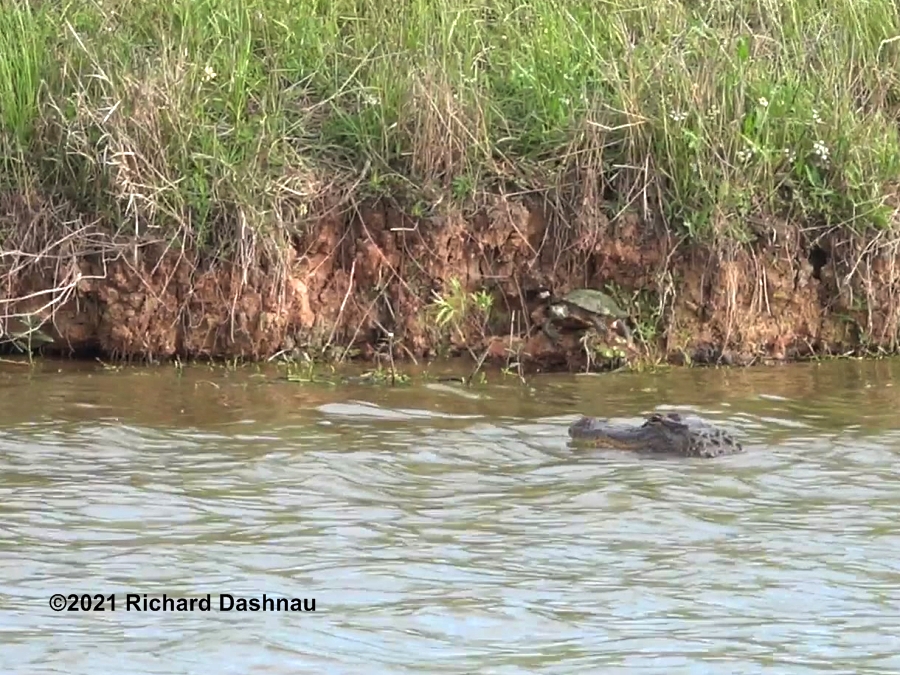
Wide
shot showing alligator on the right.
There's
a turtle on a ledge in front.
Suddenly a Nutria swam past! The alligator didn't seem to care.
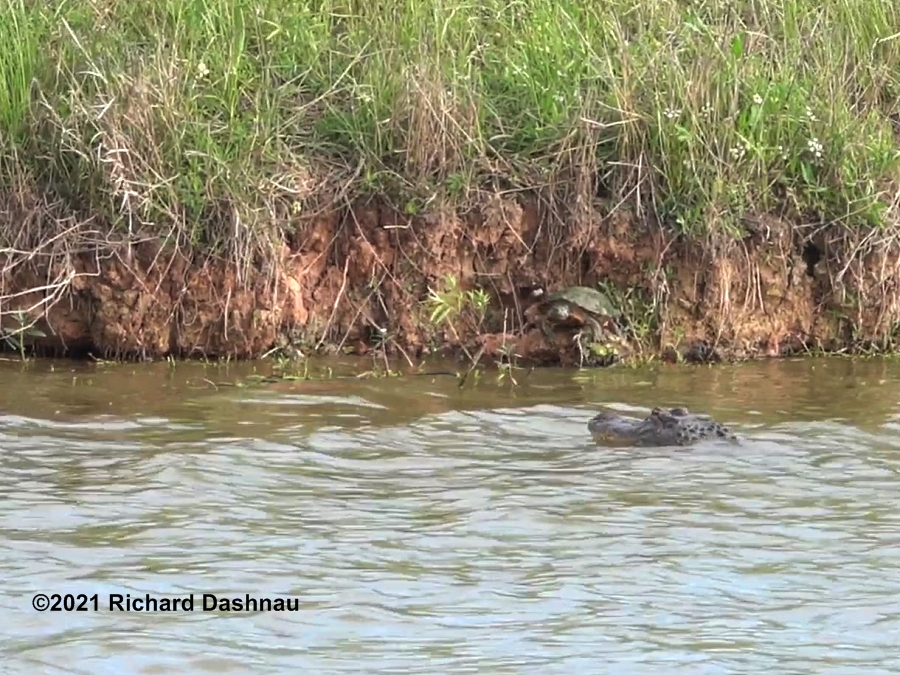
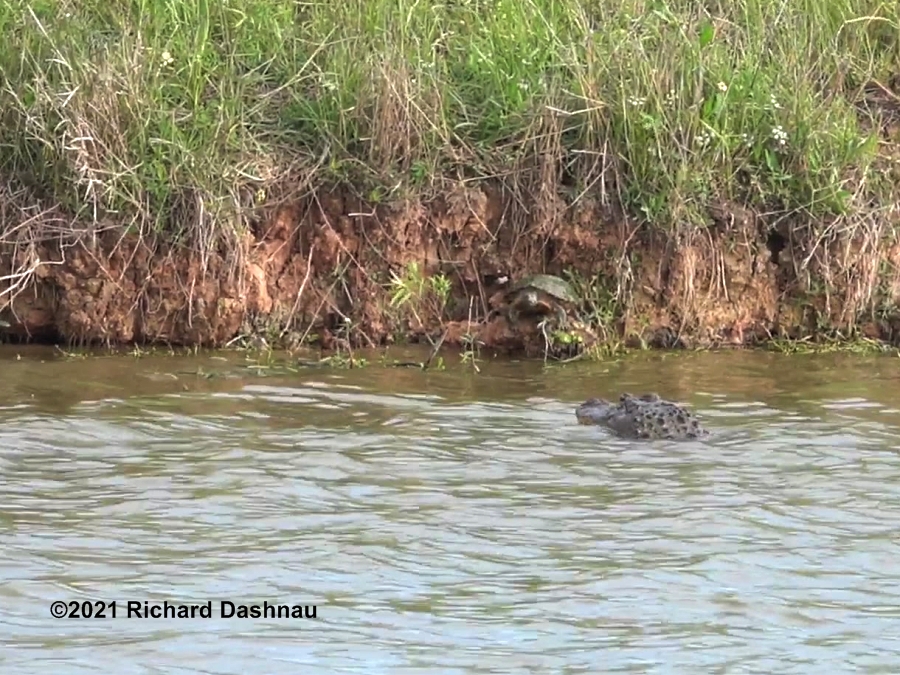
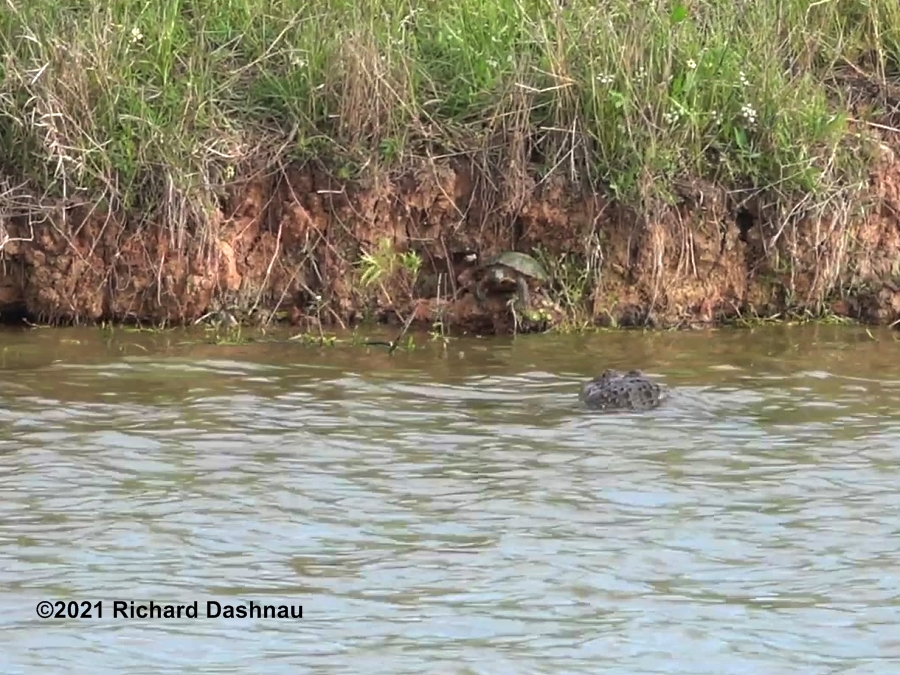
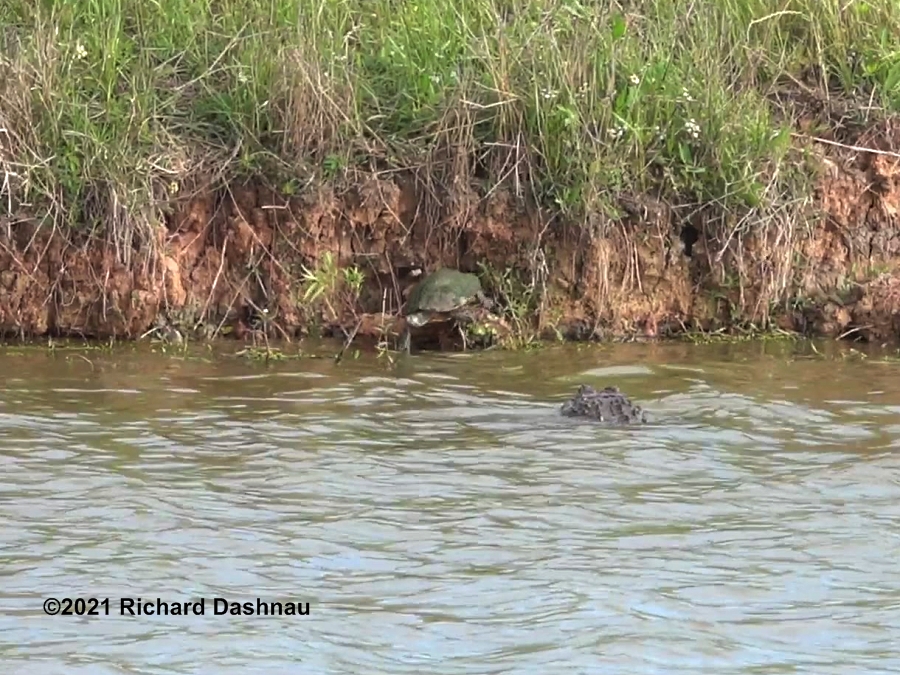
The
alligator slowly turned,,,
...towards
the turtle. The turtle and the alligator stared
looked at
each other. The turtle decided to leave.
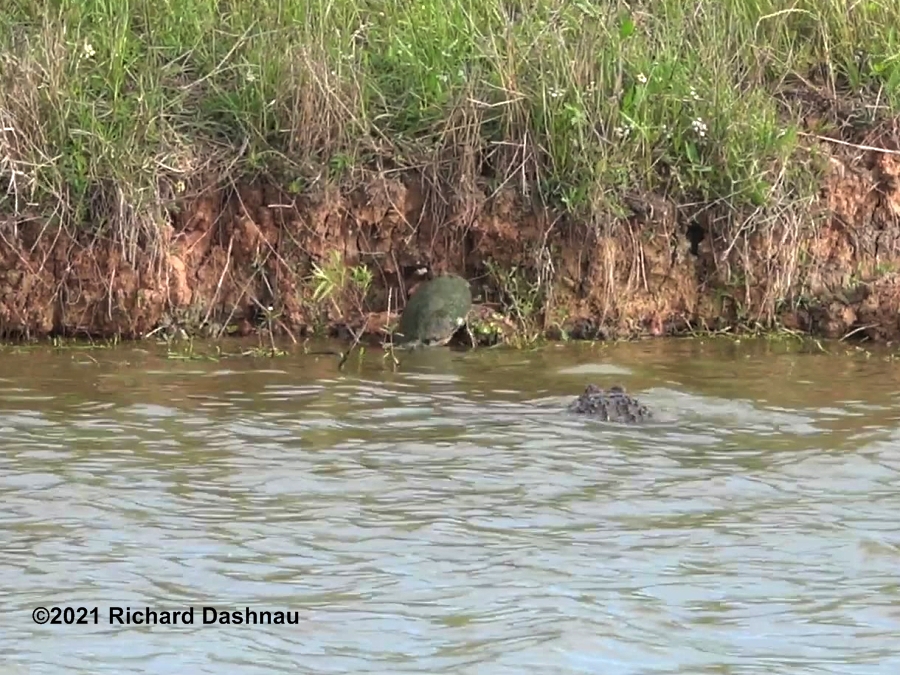
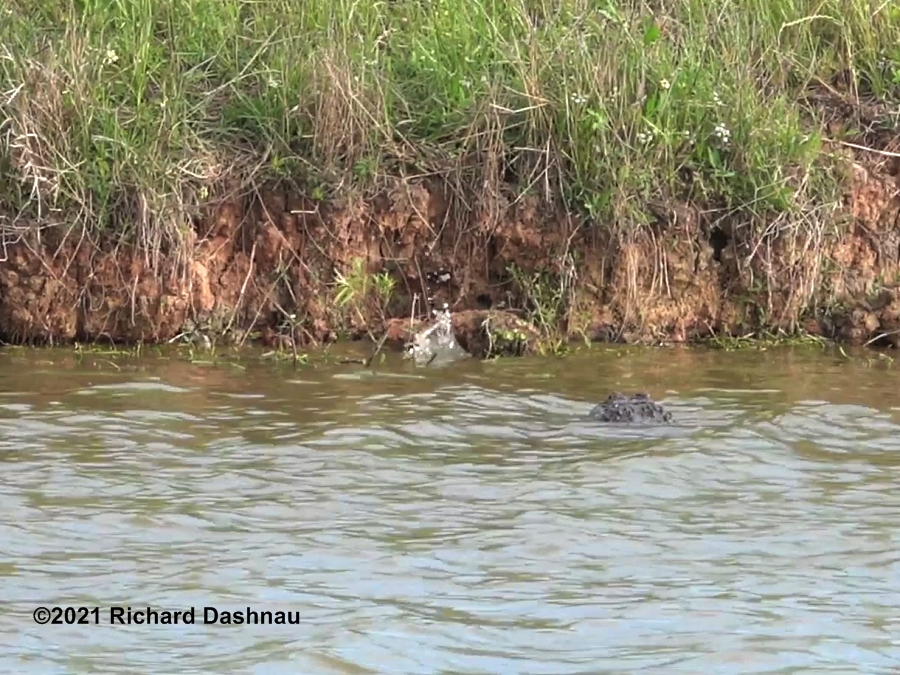
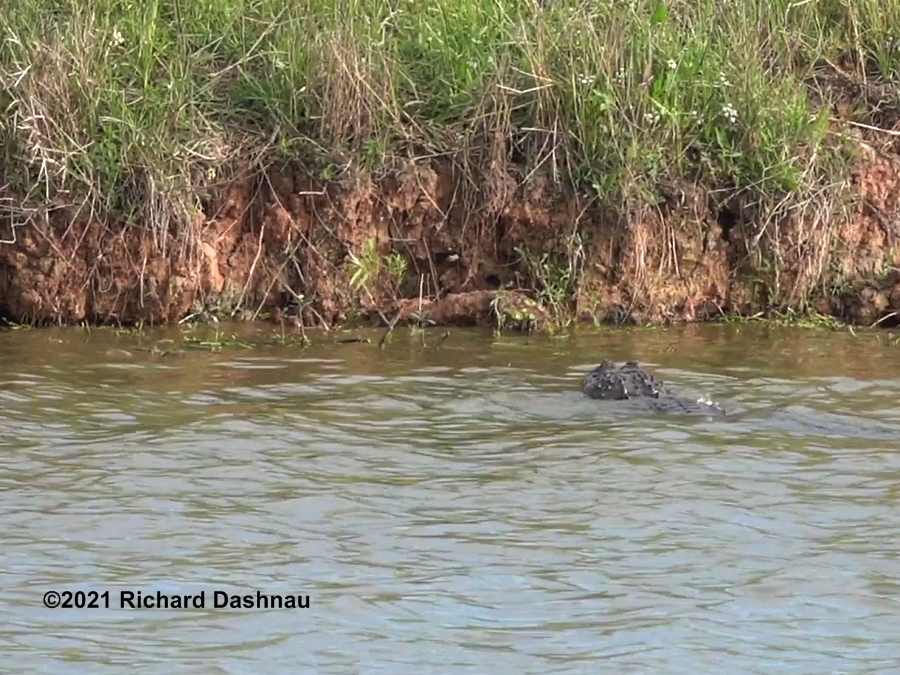
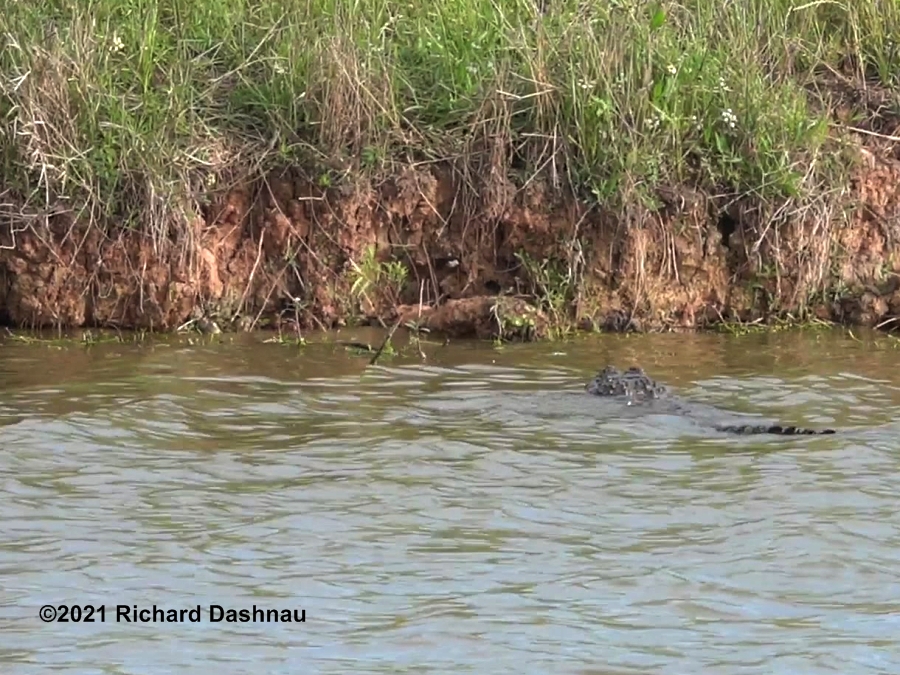
The
turtle's dive.
PLOP!
The turtle was gone.
The
alligator might have been disappointed. It floated its body a
bit, the back and tail showed.
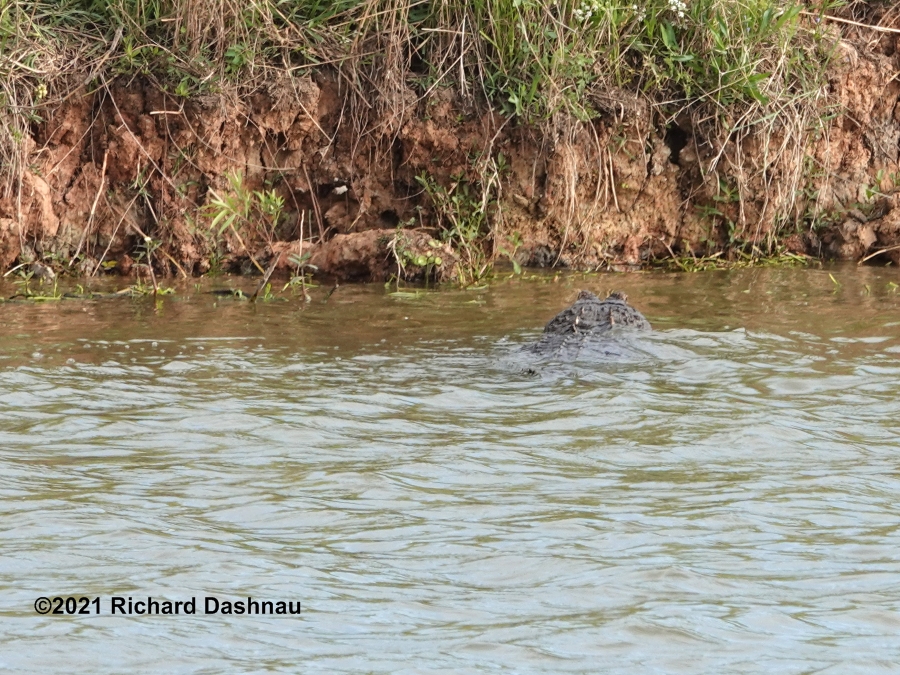
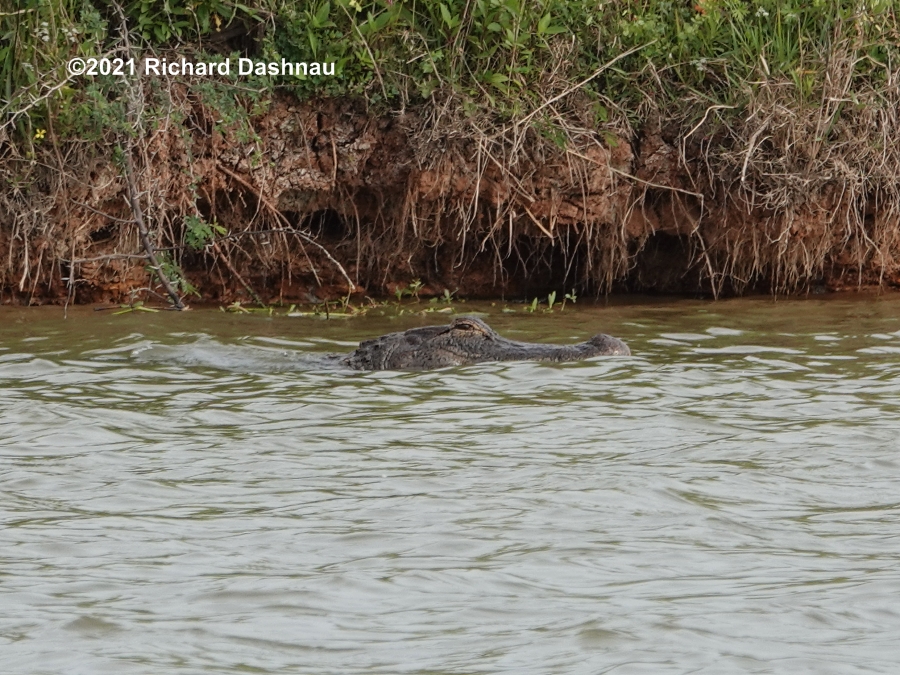
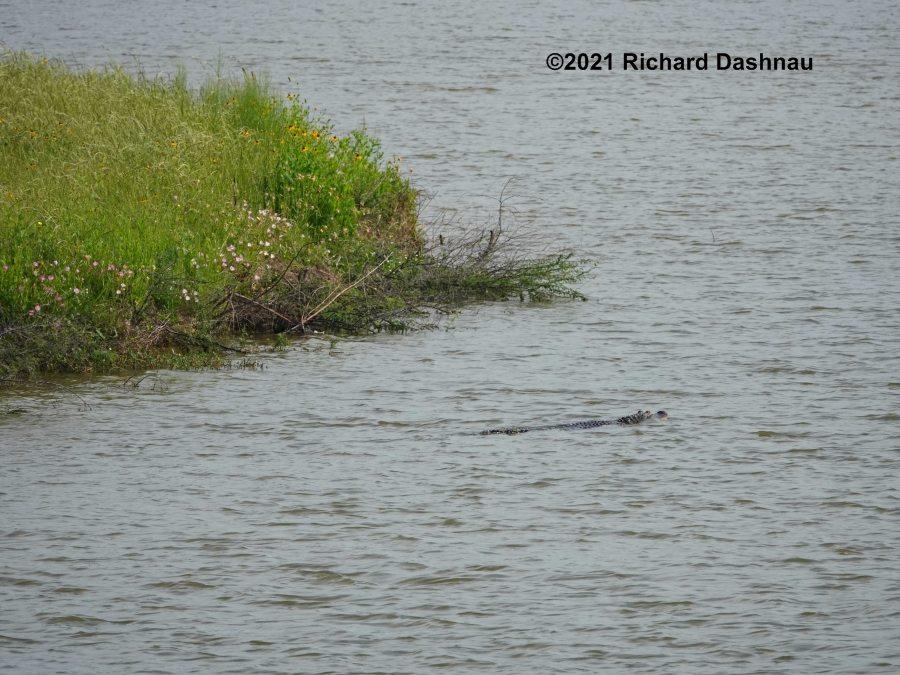
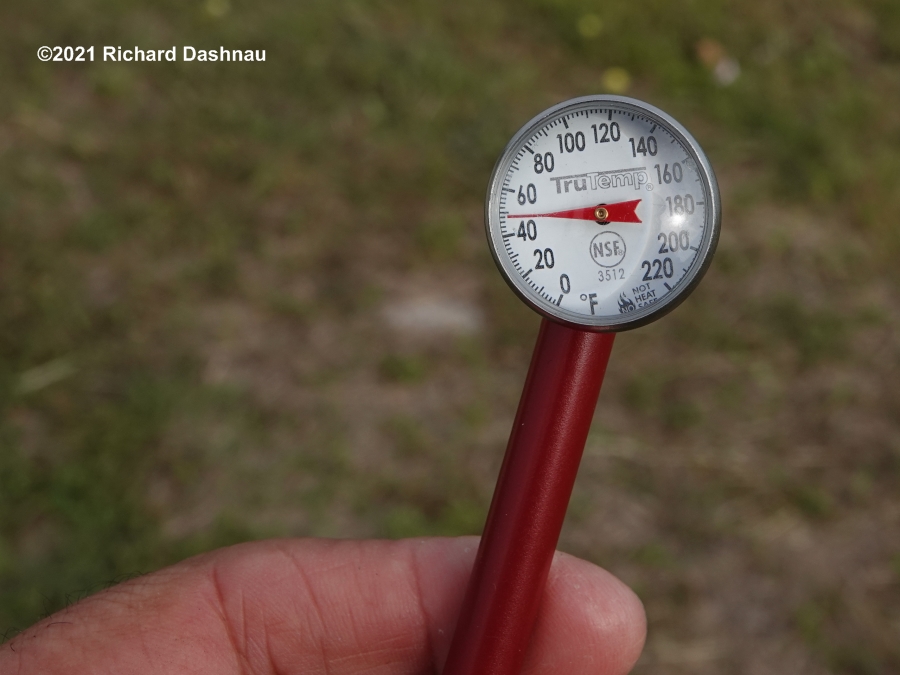
The alligator
turned and slowly moved along the bank. Are those
holes erosion, or burrows? Then, it left
for the
island. Temperature was about 50� F where I was
standing.
And, this page shows alligators at the park, on land, near various landmarks at the park.
Go back to my main alligator page, Alligators
Go
back to my home page, Welcome
to rickubis.com
Go
to the main
alligator page